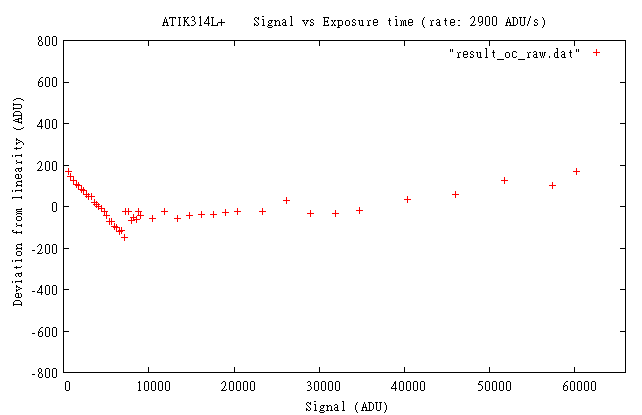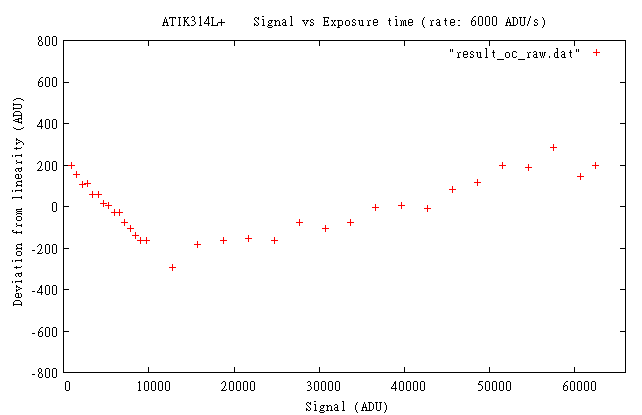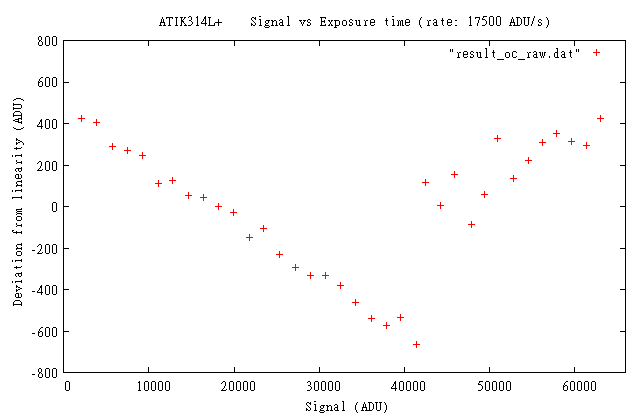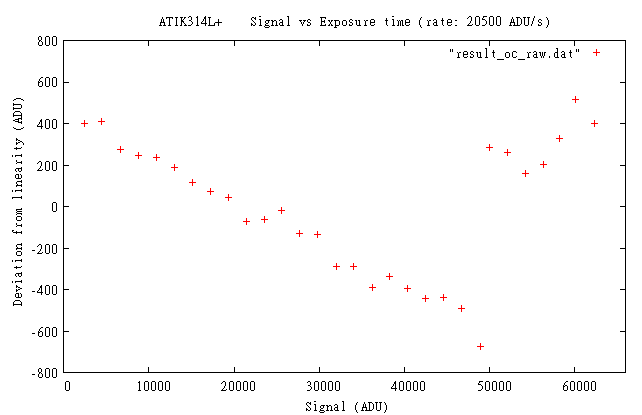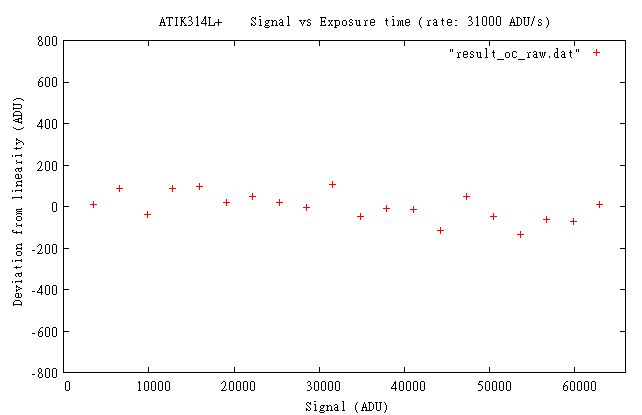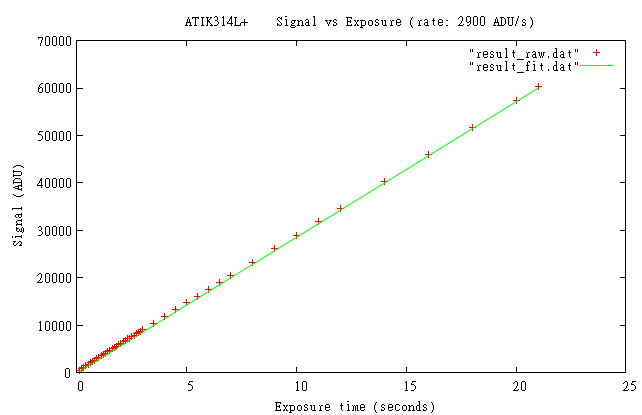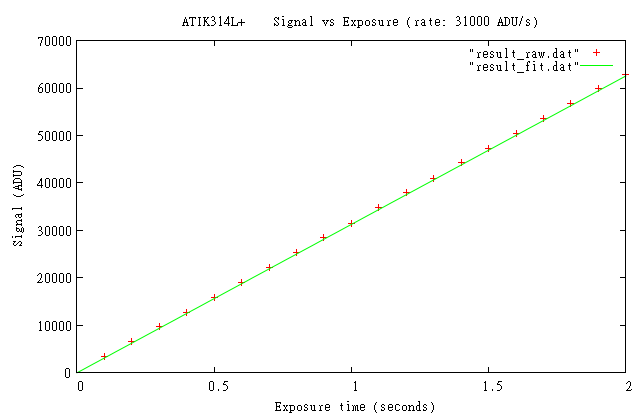(le signal donné par une caméra Atik314L+ (équipée d'un CCD Sony ICX285AL) en fonction
du temps de pose - la source de lumière est un ensemble de LED alimenté par une alimentation
de labo de haute précision) :
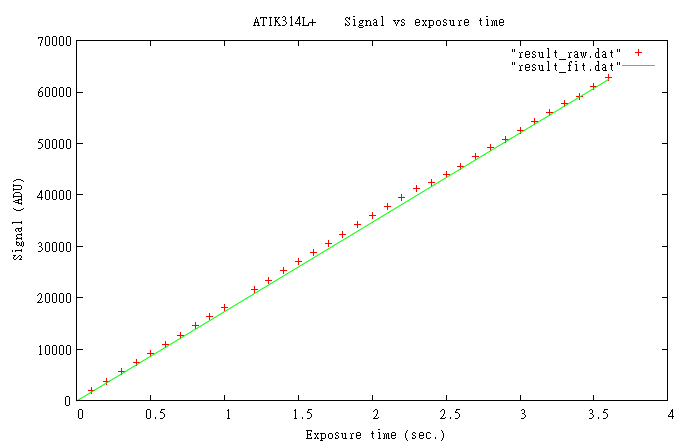
The cross represent measured points. Green line is the best linear fit.
I use the tools decribed at the end of:
http://astrosurf.com/buil/isis/isis_tuto/tuto5.htm
The non linearity response is evident
Now, the deviation of obsrerved points relative to linear fit computed in
the range [0 - 65535] :
(l'écart entre les mesures et le meilleurs ajustement linéaire dans
la gamme de dynamique 0 - 65535 ADU (ou unités de comptes) :
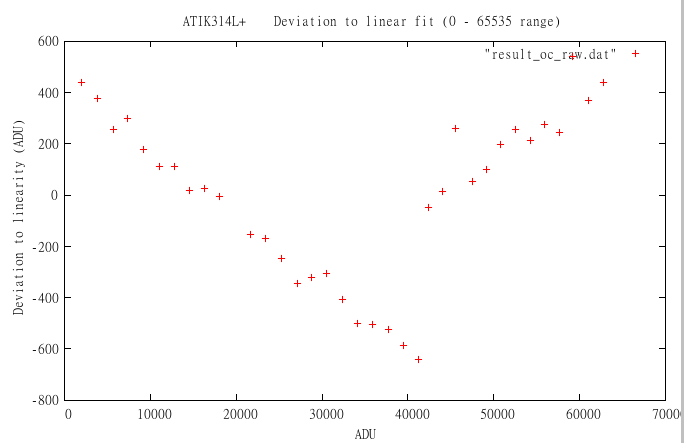
You can note two regimes : (1) a linear part between [0 - 41000]
(2) a step (AGB commutation) + a relatively linear (inversed) response in the
the range [4100 - 65535].
The non-linearity is significant. Clearly, for high quality spectrophotometry
only the dynamic range [0-40000] is useful if non-linearity is not corrected.
Here the deviation to a linear fit limired to range [0-41000] only :
(pour un travail de haute qualité spectrophotométrique, il est
recommandé de ce limiter à une dynamique de signal comprise
entre 0 et 40000 unités de compte si on ne corrige pas le défaut
de non linéarité - graphe suivant, l'écart à la non linéarité en ce limitant
à la région [0 - 40000]) :
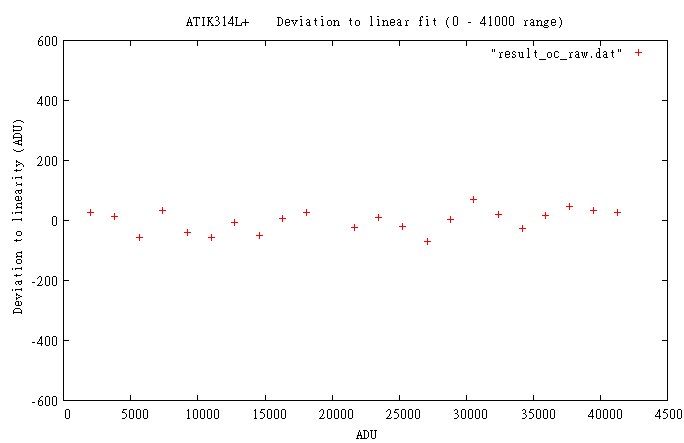
A second independant evaluation for check measure dispersion:

ISIS can correct non linearity default during spectra processing
but the large step at 41000 ADU is really difficult to modelize with
polynomial function. for the special case of Atik314L+ model (Sony CCD).
(la possibilité de corriger la non linéarité est prévue dans ISIS,
mais la modélisation de ce défauts est actuellement très délicat
dans le cas du modèle Atik314L+ - CCD Sony - à cause du saut de gain
produit par la mise en route du système anti-éblouissement pour des
niveaux supérieurs à 40000 ADU).
Christian Buil
